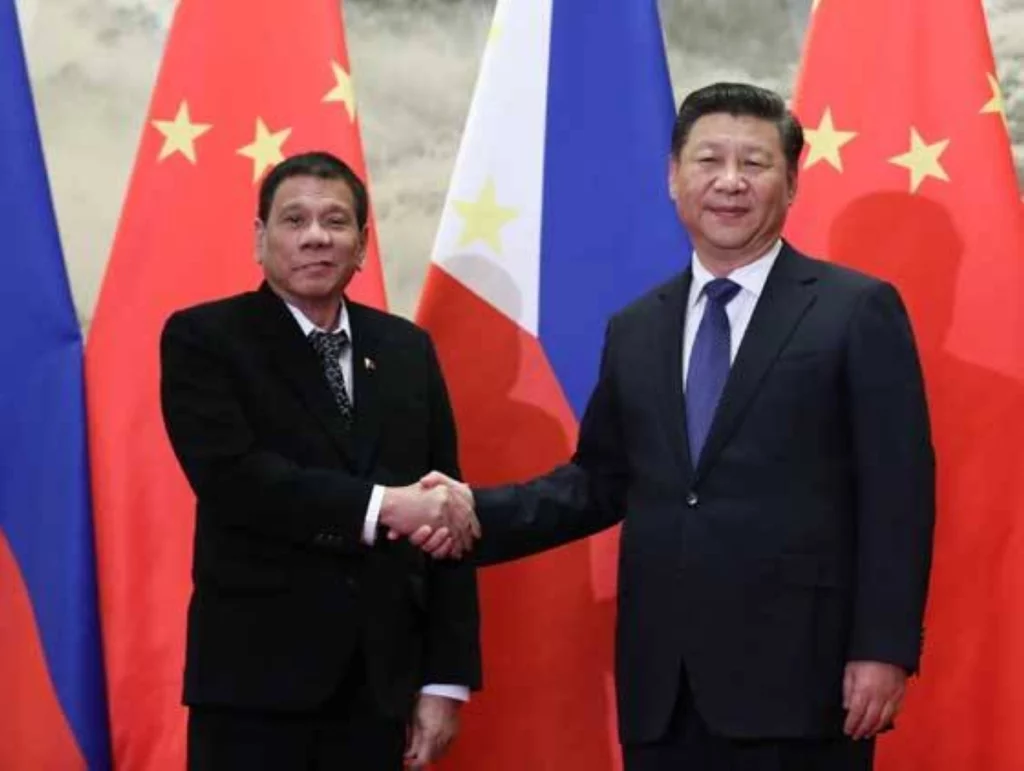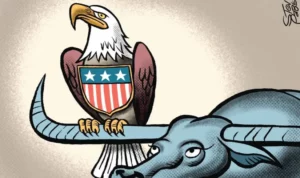
First of 2 parts
DESPITE existing differences, the rapprochement with China and the renaissance in the friendly and good bilateral relationship between the Philippines and China is one of the legacies of the Rodrigo Duterte administration that yielded tangible and concrete benefits for both countries and their people.
Philippines-China bilateral relations not only improved under the Duterte administration but was upgraded to a “comprehensive strategic cooperation.” Indeed, the ties between the two countries improved dramatically, boosting friendship and mutual understanding under the Duterte presidency.
Under the leadership of Duterte, Philippines-China relations no doubt gained some new vitality and were reinvigorated. Likewise, the Philippines has benefited economically from the warm relationship with China.
During the six years under President Duterte, China became the Philippines’ largest trading partner, the country’s second-largest source of foreign investment, the largest export market, the largest source of imports for the Philippines, and the second-largest source of tourists for the Philippines.
Indeed, in the six years of the Duterte administration, the total trade volume between China and the Philippines tripled. Chinese investments in the Philippines quadrupled under Duterte.
During the Duterte presidency, the Philippines became a significant partner of China in economic and trade cooperation. This was precisely because of the pragmatic cooperation between the two countries under President Duterte.
Such friendly and good-natured bilateral ties between the Philippines and China can be credited to President Duterte’s independent foreign policy with the mantra of “friends to all and enemy to none” anchored on the fact that the Philippines is neither beholden nor a pawn to anyone, any country, nor any superpower. Likewise, the differences and conflict of interest between the Philippines and China in the disputed South China (SCS) during Duterte’s time were adequately managed and handled despite the complicity and sensitivity of the dispute in the SCS between China and the Philippines and among the claimant-states.
President Duterte “de-coupled” the SCS dispute from the areas that are not in conflict, and the country has benefited a lot from the friendly and warm ties between the Philippines and China. The Duterte administration focused its attention and energies on areas of cooperation which yield tangible benefits.
In terms of foreign policy, under Duterte’s leadership, the Philippines was able to broaden the boundaries of its diplomacy beyond its traditional ally, the United States. The country was able to build productive ties with countries like China which are willing to engage with the Philippines based on equality, mutual trust and respect.
Indeed, Duterte spent six years repositioning the Philippines away from a staunch pro-American stance toward a neutral one, pursuing an “independent foreign policy” to secure extra leeway to maneuver around and between China and the US while placing the country’s national interest above everything else.
It is a fact that this strategy and approach to international relations or geopolitics pursued by President Duterte was not an easy task and required a “subtle and tactful balancing act and diplomacy” in a very volatile, challenging and evolving regional security environment surrounding the disputed SCS and the Asia/Indo-Pacific region these days.
Fruits of PH-CN friendship
Speaking of the “strategic cooperative relationship” between the two countries, it is imperative to mention some of the tangible and landmark manifestations of this relationship by enumerating some of the significant government-to-government cooperation projects that have already been completed under Duterte, with more projects under implementation or currently in progress and being continued under the administration of President Ferdinand Marcos Jr. This list is not exhaustive but just a sample illustration to demonstrate the deepened cooperation and understanding between the Philippines and China at least on the economic front.
On infrastructure, two Chinese-funded bridges, the China-aid/grant modern and state-of-the-art Estrella-Pantaleon Bridge and China-aid Binondo-Intramuros Bridge, are now in operation with an estimated daily traffic volume of 80,000.
Likewise, the P4.37 billion ($83.9 million) Chico River Pump Irrigation Project (CRPIP), the first flagship infrastructure project financed by China under President Duterte’s Build, Build, Build program on June 25, 2022. The Kaliwa Dam project was also signed on Jan. 28, 2022.
Moreover, the China-funded Samal Island-Davao City Connector Project had a groundbreaking ceremony on Oct. 27, 2022. Once completed, this project will facilitate local residents’ travel, spur the economic growth of Samal island, and enhance the sustainable development of Davao City and surrounding regions.
In agriculture, Philippine pineapples account for more than 70 percent of China’s imported pineapple market. In 2019, the export of pineapples from the Philippines to China increased by 229 percent. From 2019 to 2021, the average annual export of pineapples from the country to China exceeded $100 million.
Also, in 2019, China approved the entry of Philippine coconuts into the Chinese market. Currently, the Philippines is China’s second-largest supplier of coconut products and has a 27 percent share of China’s coconut market. In 2021, the Philippines exported $490 million worth of bananas to China. The Philippines thus far is the No. 1 supplier of bananas to China and has a 47.1 percent share of China’s banana market. In 2019, China approved the entry of Philippine Hass avocados into the Chinese market, making the Philippines the only country in Asia to export avocados to China. China also recently opened the opportunity for the export of Philippine durian to the Chinese market, which is a huge opportunity for Filipino durian farmers primarily located in southern Philippines.
Also, on March 25, 2022, the Chinese ambassador to the Philippines, Huang Xilian, turned over P4 million ($76,800) worth of fertilizers to the Philippines. In addition, China has agreed to donate another 20,000 metric tons of fertilizers to improve the food security and welfare of the Filipino farmers. The establishment of the Philippine-Sino Center for Agricultural Technology (PhilSCAT) under the Duterte administration is another fruit of the solid cooperative ties between the Philippines and China during the Duterte presidency.
On health care and disaster relief, China donated around 5 million doses of Covid-19 vaccines to the Philippines; the government purchased millions of the Sinovac vaccine from China. Likewise, on Dec. 16, 2022, the China-aid autoclave and equipment under the Regional Covid-19 Response Project were turned over to the Department of Health.
On energy, the GNPD 2×660MW coal-fired electric power generation facility is now the largest coal-fired power plant under construction in the Philippines. This plant could supply the electricity needs of a million families when completed. Also, the Brighten-Up project, donated by the State Grid Corp. of China (SGCC) and conducted by Nari Group Corp., has brightened villagers’ standard of living and children’s education and the friendship and cooperation between the two countries. There is also the Philippines-China joint Bonifacio East Project (BEP), a new-generation smart eco-city with a landmark twin lake landscape in the center of Manila, comprising a land area of 596,200 square meters. It will revitalize the visage of Manila and activate regional development.
On telecommunications, the construction of the first base station of DITO in the National Capital Region has been completed. As of March 25, 2022, the DITO network already covered 513 cities, and the number of online subscribers had reached 7.314 million.
Indeed, all these cooperative projects between the Philippines and China are a testament to the friendship and mutual understanding between the Philippines and China and serve as a “win-win” cooperation and compromise that will benefit both nations.
(To be continued next week, April 6, 2023)
Source: The Manila Times
https://www.manilatimes.net/2023/03/30/opinion/columns/ph-china-relations-in-the-new-era-and-circumstances/1884952


